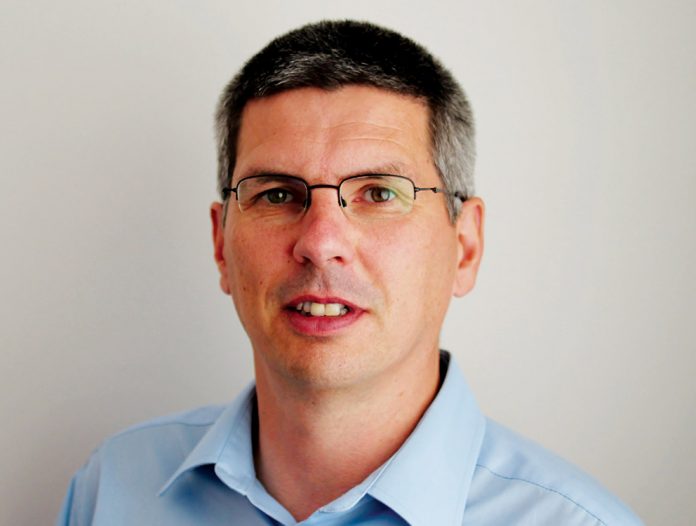In this issue of Water Industry Journal we talk to Andy Wilson, Business Development Manager for Hidrostal Ltd, about Anaerobic Digestion.
For background, please give me an overview of your role and remit?
My main objective is to align Hidrostal products and services with market applications which can benefit from the versatile features of the Hidrostal screw centrifugal impeller.
Tell me a bit about the business:
Hidrostal was founded by the Swiss Engineer, Martin Stähle, who invented the screw centrifugal impeller in 1957, originally to safely pump fish. Its gentle handling characteristics combined with exceptionally large free passages led to the Hidrostal pumps being applied to a much wider range of applications. Each pump in the Hidrostal range uses a variation of the impeller to solve specific pumping problems.
Anaerobic Digestion as an industry is seeing exciting innovation, and rapid change. It potentially offers the water industry great opportunities. Can you let us know from your perspective what some of these opportunities are?
The AD market has been rapidly growing in the UK over the past several years, both in the industrial and water industry markets. Biogas and Biomethane are now recognised as being able to play a part in a decarbonising energy strategy.
Given Methane is a greenhouse gas that’s more than twenty times as damaging to the environment than Carbon Dioxide, it makes sense to consume and utilise it as a sustainable form of energy.
Why is what Hidrostal does important in the field of Anaerobic Digestion within the water industry?
Whilst AD represents a big opportunity, it’s not without some risk. The operational costs of badly designed and operated plants can reduce the commercial gains in many cases.
There can be a lot of unknowns in the chemical and physical composition of what passes through an AD process. This can impact on the mean time to failure of process equipment including pumps and mixers, especially if the design specification is not appropriate, or the scheme has been cost engineered resulting in higher maintenance and product failure costs.
A good example is the high number of bladed mixers that can be found on newer UK installations. Many AD plant designs originate from the matured German market. Here the drive to use the most efficient mixers saw a standardisation on guide rail mounted and shaft driven bladed mixers.
Whilst bladed mixers have good published efficiencies the cost of ownership can be very high, if for example the process yields too much Hydrogen Sulphide (H2S). This can dissolve mounting brackets and even tanks. Too much stringy material in a mix can snag and entangle on the blades causing vibration and premature seal failure. Top or side entry bladed mixers also present the owner with the higher health and safety risks associated with a requirement to work at height and sometimes entry into a confined space to gain access to failed equipment.
Hidrostal mixer systems have the advantage of being external and at ground level. There is nothing mounted inside or suspended from the top of a tank. By not having a requirement to install pipework and nozzles inside a tank, a Hidrostal mixer system requires less energy to overcome these additional friction losses, ensuring maximum power is delivered at the nozzle for the mix. There is also no requirement to completely drain down a tank at a future date, to maintain or replace pipework and nozzles, with all the health and safety risks and additional costs associated with tank entry. Instead the Hidrostal pump mixer system adheres more closely with CDM regulations and designs out most risks.
Hidrostal mixers use large bespoke nozzles to generate mass flow to bring the contents of a storage tank to uniform consistency. A Hidrostal pumps low shear and large free passage non-clog impellers means there is no requirement to macerate the pumped media. Where the sludge condition is poor with solids too larger to enter the pump, then macerating or conditioning the sludge should be carried out just once, pre-mixing, then mix using a more efficient lower power consumption pump for the higher utilisation time. Mixing with a macerator should be considered as a last resort if maintenance costs and energy consumption are to be kept to a minimum.
How is Hidrostal different to your competitors?
AD systems must achieve a uniform balanced process. An underloaded system will deliver less energy and an overloaded system can cause a digester to inactivate with huge loss in gas and energy production.
Hidrostal centrifugal pumps feature steep performance curves. This characteristic means minimal flow variation with changing sludge thickness. In addition the high efficiency and low shear Hidrostal hydraulics mean there is minimal impact to fluid viscosity, a key feature on many applications involving “living” process sludges.
Unlike other centrifugal pumps a Hidrostal is a combination of a semi-positive displacement and centrifugal, and can easily handle sludges up to 8% dry solids and 4000 Centipoise. Sludges between 8 – 15% dry solids may also be possible to pump depending upon their rheology.
Flexibility remains the key to a well-engineered mixer solution as the contents of the tank seldom remain constant over time. The Hidrostal concept allows a change of nozzle size and angle without having to completely drain or enter the tank.
A pump impeller or motor change is also possible to increase or decrease mixing performance and all from a safe working position outside of the tank. More importantly the pump efficiency is easily restored from a safe working position by simple adjusting three external screws on the pump casing.
This versatile mixer system is also available as an offsite build unit reducing installation time and controlling quality further.




